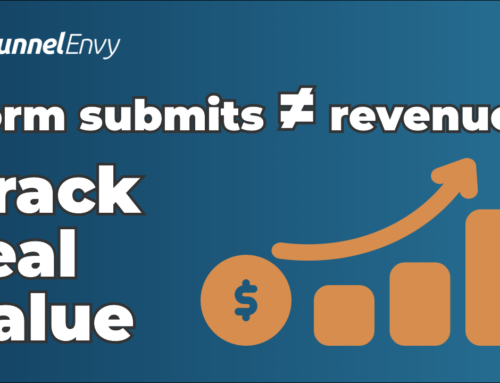For most B2B marketers, Google Analytics (GA) is a foundational part of their stack. Google’s long-running web analytics platform emphasizes universal compatibility, meaning it often serves as the connective tissue between different elements and software applications you use in your marketing. Most business and marketing tools incorporate Google Analytics. With the continued implementation of Google Analytics 4, the platform has leaped forward in critical areas.
Announced in late 2020, Google Analytics 4 is one of the most significant upgrades the platform has seen since its launch over 15 years ago. You might have already migrated your data to this new version, but if you haven’t, the deadline is coming up quickly. On July 1, 2023, Universal Analytics properties used by older versions of GA will stop processing new data. Depending on your settings, Google may automatically create a new instance of your old profile into the new GA4 platform. If possible, try to get ahead of this deadline and migrate your profiles before Google does it for you.
This article will help you understand some of the most important new features in Google Analytics 4, how they differ from previous versions, and how this could impact how you use GA throughout your funnels.
What Are the Biggest Changes in Google Analytics 4?
The overall mission of GA hasn’t changed: it’s designed to help website owners and marketers better understand the way visitors interact with digital properties. Google has changed the way that its platform understands and measures these interactions in a few key ways:
- More flexible events. The system for gathering data (or “hits,” as Google calls it) is much broader in GA4. It’s derived from the Firebase Analytics platform, which Google developed for mobile devices and apps. In the updated version, you can set custom events based on almost any action or event you want instead of limiting yourself to Google’s predetermined event categories.
- Support for apps and other websites. The new version of Google Analytics can track user data on external apps and social media platforms. It’s especially beneficial to apps built with Firebase SDK, Google’s suite of app development tools and platforms to help developers and engineers streamline products.
- New visual dashboard. Google has streamlined the main GA dashboard’s interface and visual aesthetic, offering a more concise set of options and a cleaner main page. There are fewer options on the left-hand navigation menu and a less boxy design. Google has also implemented a tab-based navigation system that many users will find more intuitive.
New Reporting Tools
As most experienced marketers know, the data you gather is only valuable if you can measure and understand it. This is typically done by taking it from the platform on which it was collected and contextualizing it into a report or similar document. Google Analytics always had powerful reporting tools, but GA4 ups the ante by adding a few new features.
Besides the new cross-platform reporting tools mentioned above, GA4 offers more sophisticated attribution models than the last version. That means deeper insights into where leads come from and which sources provide the most qualified prospects. Better attribution can lead to better marketing and less wasteful spending on channels that don’t produce the same results.
Google Analytics always had powerful reporting tools, but GA4 ups the ante by adding a few new features. Share on XFinally, Google’s upgraded platform also incorporates machine learning, the fundamental principle behind the vast artificial intelligence trend that seems to be sweeping every industry. This can be used for predictive recommendations about optimizing your site or app and protection from spam or bots that may be generating a high level of suspicious traffic. Machine learning can also track the habits and patterns of specific users and help you develop protocols for serving preferred content to the groups that want to see them.
These tools are great for both business administrators and marketers responsible for explaining their work results to clients. Better reporting means more efficient use of the data you create and access in Google Analytics.
Cross-Platform Support
Google understands that the internet is a much different place than it was in the late-2000s when Google Analytics first rose to prominence. Today’s web is fragmented – people use several different apps or social media networks to find what they’re after, whether information, entertainment, or connection with others.
That’s why one of the key hallmarks of GA4 is expanding the places where Google lets you track user data. With GA4, you can gather data from Twitter, Instagram, and Facebook to help you measure significant trends and patterns related to your business and its presence on third-party websites. You can imagine how helpful it might be to include social media data and information about your funnel’s different websites.
Compatibility with social media is also powerful because of GA4’s attribution technology. You can attribute leads from specific social media networks, which can be used to tweak your campaign and investment. You can also include GA4 attribution as a component of a larger lead-scoring formula to grade new opportunities across the company.
Best of all, if you’re already using a tool for attribution – perhaps a CRM like Salesforce or a marketing automation platform like HubSpot – you can still connect your Google Analytics account to the most popular types of lead tracking and marketing analytics software.
Final Thoughts on How Google Analytics 4 Impacts Your Funnels
Most marketers who have been on the job for a considerable time have some experience working with Google Analytics or at least have worked alongside others who know the platform well. For the better part of two decades, it’s been a pivotal arrow in the quiver of marketers and website administrators looking to get a sense of where their traffic is coming from, how people interact with their pages, and what the ideal prospect looks like.
With their new update that will sunset older versions this upcoming July 1, Google has widened the scope of data available to users and increased the number of ways to measure user interactions on their websites. From a business perspective, these updates will lead to marketers and businesses getting an even firmer grasp of their ideal clients, letting them develop more customized solutions that address their most pressing problems.
You may still have time before the deadline, but it’s always better to be prepared well. If you haven’t already made the jump and are looking for help converting your Universal Analytics account to Google Analytics 4, want to set up a new campaign, or are simply struggling to gain meaningful business insights from Google Analytics or any other platform for gathering data about user interactions with your web presence, we may be able to help.
The team at FunnelEnvy has many years of collective experience working with consumer and business software companies across all kinds of industries, from healthcare to real estate. To find out more about whether or not we can help and get additional details about our pricing, fill out this short quiz.





